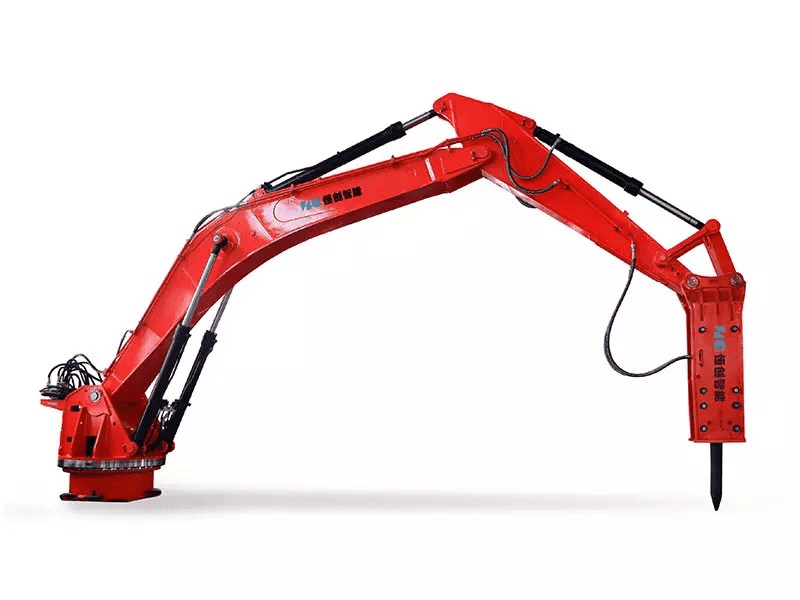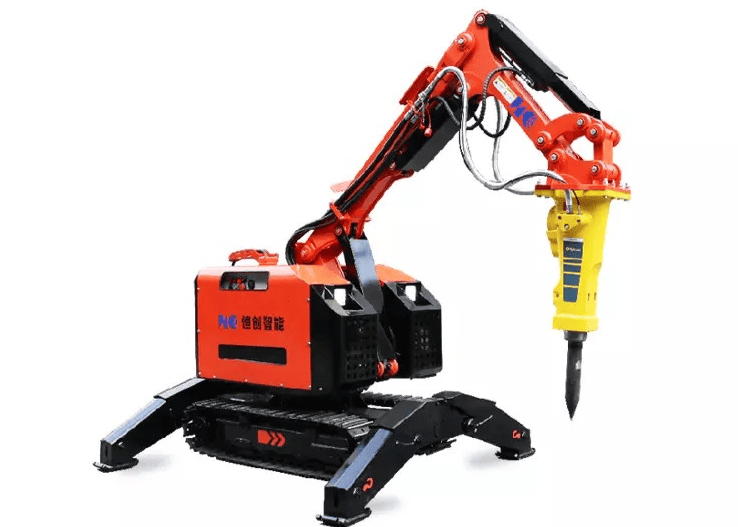The mining sector is undergoing a seismic shift, driven by advancements in robotic mining equipment and autonomous mining robots. These technologies are not only enhancing efficiency but also addressing long-standing challenges like worker safety and environmental impact. Among the most transformative innovations are Rockbreaker Boom Systems and Demolition Robots, which are redefining material extraction and site preparation. This article explores the rise of mining robotics, their applications, and measurable benefits, with a focus on how these machines are shaping the future of mining.
Mining robots are autonomous or semi-autonomous machines engineered to perform high-risk, repetitive, or precision tasks in mining operations. From drilling and blasting to demolition and material handling, these systems reduce human intervention while maximizing productivity. Key categories include:
These self-guided machines, such as driverless haul trucks and drilling rigs, use AI and GPS to navigate complex terrains. Companies like Rio Tinto and BHP have deployed them to optimize ore extraction in remote locations.
Designed for hazardous environments, Demolition Robots like Hitech’s HCR and Brokk’s electric-powered machines or Husqvarna’s DXR series excel in breaking down concrete structures in confined underground spaces. Their precision minimizes collateral damage, making them ideal for tunnel renovations or mine expansions.
Using ultra-high-pressure water jets (up to 40,000 psi), Hydrodemolition robots remove concrete without vibrations, preserving structural integrity in sensitive areas like mine shafts or processing plants.
A Rockbreaker Boom System is a hydraulic attachment mounted on excavators (creating a rock breaker excavator) or fixed near crushers. Equipped with a hydraulic rock breaker, it fragments oversized rocks that could clog machinery, ensuring continuous operation.
Modern mining combines traditional heavy machinery with robotics to tackle diverse challenges. Below, we spotlight two game-changers: Rockbreaker Boom Systems and Demolition Robots.


A Rockbreaker Boom System consists of a robust boom arm, a hydraulic rock breaker, and a power pack. These systems are critical for:
Primary Breaking: Fragmenting large rocks at excavation sites.
Secondary Breaking: Reducing oversized debris post-blasting.
Crusher Blockage Clearance: Preventing downtime by dislodging jammed materials.
| Feature | Traditional Methods | Rockbreaker Boom System |
|---|---|---|
| Efficiency | Manual labor slows operations | Processes 50–100 tons/hour |
| Safety | High risk of flyrock injuries | Operators work remotely |
| Cost | Frequent equipment downtime | Reduces crusher jams by 70% |
| Precision | Inconsistent fragmentation | Adjustable force for targeted breaks |
Demolition Robots, such as concrete demolition robots or concrete removal robots, are compact, remote-controlled machines equipped with breakers, crushers, or drills. They excel in:
Underground Mining: Dismantling aging infrastructure without risking workers.
Surface Mining: Clearing concrete barriers or overburden.
Emergency Response: Safely managing collapses or blockages.
The adoption of robotic mining equipment delivers measurable advantages across safety, efficiency, and sustainability.
Demolition Robots eliminate exposure to falling debris, silica dust, and explosives.
Rockbreaker Boom Systems allow operators to control breaks from a safe distance.
Result: A 2019 study found mines using robotics saw a 45% drop in injury rates.
| Metric | Manual Operations | Robotic Operations |
|---|---|---|
| Drilling Accuracy | ±15 cm deviation | ±2 cm deviation (autonomous rigs) |
| Downtime | 8–12 hours/week | 2–3 hours/week |
| Output Consistency | Variable due to human fatigue | 24/7 operation with AI optimization |
While initial investments are high, robotics reduces long-term expenses:
Labor Costs: Autonomous fleets cut staffing needs by up to 40%.
Fuel Consumption: Electric Demolition Robots use 60% less energy than diesel equivalents.
Maintenance: Predictive analytics in Rockbreaker Boom Systems lower repair costs by 25%.
Hydrodemolition robots produce no dust or vibrations, protecting ecosystems.
Electric autonomous mining robots reduce greenhouse gas emissions by 35% compared to diesel machinery.
As AI and IoT evolve, mining robots will become smarter and more interconnected. For instance, Rockbreaker Boom Systems could integrate with drone-based mapping to preemptively target rock formations, while Demolition Robots might use machine learning to optimize demolition patterns.
Leading manufacturers like Sandvik, Epiroc, and Hitech (www.hcrot.com) are pioneering these advancements, offering customizable solutions for mines of all scales.
From Rockbreaker Boom Systems that keep crushers running smoothly to Demolition Robots that safeguard workers in hazardous zones, robotics is undeniably the future of mining. To explore cutting-edge robotic mining equipment tailored to your operations, visit www.hcrot.com and discover how automation can transform your productivity and profitability.